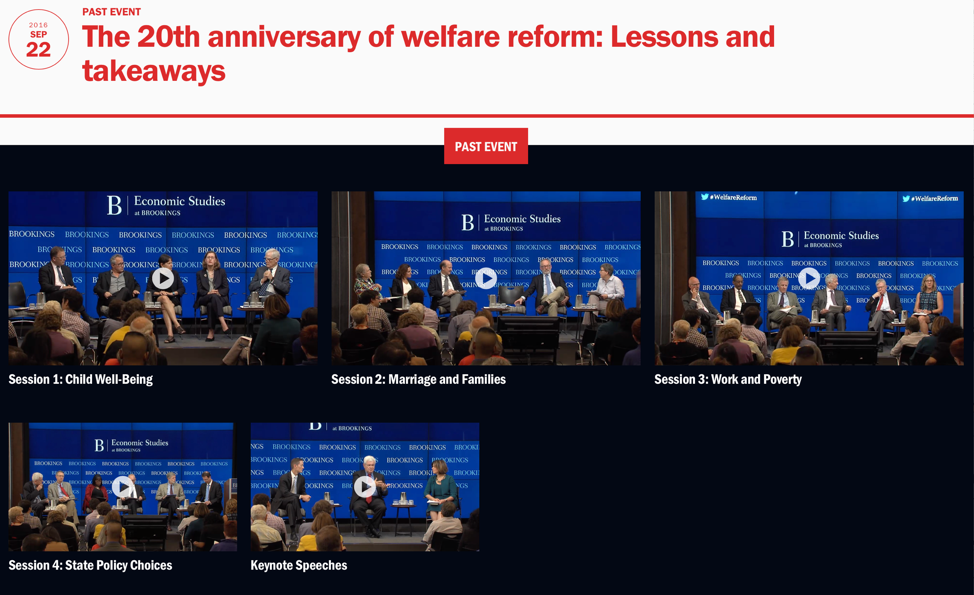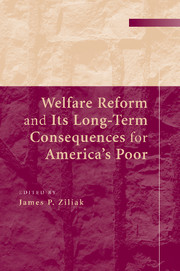Between 2011 and 2016, coal mining employment declined by over 50 percent in Appalachia, resulting in large earnings and employment losses in coal-dependent communities. Whether these disruptions reflect temporary adjustment costs or signal more persistent decline depends in part on the extent and nature of various investment responses. This paper leverages differential Commuting Zone (CZ-) level exposure to coal’s decline to estimate its impact on government transfers and postsecondary training investments. Exposed CZs experienced significant increases in government transfer payments per capita. In contrast, coal’s decline produced no statistically detectable change in postsecondary degree completions, enrollment, or institutional finances. This null training response contrasts with documented effects in other settings. Given the importance of human capital in regional recovery from economic shocks, these findings suggest that distressed regions affected by the transition away from legacy energy sectors may struggle to adapt without more targeted support for postsecondary training.
Welfare Reform and Transfer Programs
Since its inception in 2002, UKCPR has contributed fundamental research on the consequences of the 1996 welfare reform. The Personal Responsibility and Work Opportunity Reconciliation Act (PRWORA) ended the cash entitlement of the Aid to Families with Dependent Children (AFDC) program and replaced it with the block grant-funded Temporary Assistance for Needy Families (TANF). The new program made assistance contingent on work activity and time limited, restricted Supplemental Security Income (SSI) for children and noncitizens and food stamps for adults without dependents, enhanced child support enforcement, and permitted government funding of religious organizations to provide social services.
UKCPR marked the 10th and 20th anniversaries of TANF with major research conferences. The first resulted in the 2009 publication of Welfare Reform and its Long-Term Consequences for America's Poor at Cambridge University Press. The second conference was held in 2016 at Brookings Institution. It included a conversation with Newt Gingrich, who was Speaker of the House during welfare reform, and Bruce Reed, who was domestic policy advisor to President Clinton. The session was moderated by Diane W. Schanzenbach of Northwestern University. Along with UKCPR, the event was co-sponsored by the Institute for Research on Poverty, the Stanford Center on Poverty and Inequality, and the University of California-Davis Center for Poverty Research. A full listing of the agenda, along with video of the event, can be found here. Two publications followed, one an issue of Fast Focus published by the Institute for Research on Poverty and the second in a 2018 issue of Pathways Magazine published by the Stanford Center on Poverty and Inequality.
2025
Childhood Welfare Exposure and Economic Outcomes for Adult Daughters and Sons
We investigate how length of time on welfare during childhood affects economic outcomes in early adulthood. Using intergenerationally linked mother-child pairs from the Panel Study of Income Dynamics, we adopt a nonlinear difference-in-differences framework using the 1990s welfare reform to estimate average and quantile treatment effects on intensity of welfare use and earnings in adulthood. The causal estimates indicate that additional childhood welfare exposure leads to more adulthood years on the broader safety net for both daughters and sons, yet this positive relationship only applies below moderate levels of adult welfare participation and reverses at greater levels of dependence. Increasing childhood welfare exposure implies lower earnings in adulthood for daughters, however we find no evidence that it depresses adult sons’ earnings. Both daughters and sons exhibit some wage penalty from childhood welfare exposure, yet only daughters are penalized through hours worked in the labor market.
2024
Is This Time Different? The Safety Net Response to the Pandemic Recession
We examine the responsiveness of the safety net to the Pandemic Recession and compare it to that in the Great Recession. Using monthly state-level administrative caseload data from five large transfer programs–SNAP, TANF, Medicaid, SSI, and UI–and measuring responsiveness by the state-level caseload response to cross-state variation in measures of the business cycle–we find that the safety net response during the Pandemic Recession was greater than occurred during the Great Recession for the most important recessionary-relief programs–UI and SNAP. But we find that the two smaller programs, TANF and SSI, were less responsive during the Pandemic, and we find that Medicaid caseloads are generally unresponsive to the business cycle. We also consider the effect of Pandemic state-level policies, such as school and business closures, on caseloads, finding that states with stricter government Pandemic policies had greater caseload increases.
2018
Long-run impact of welfare reform on educational attainment and family structure
In the early 90’s, the United States reformed its welfare system through state waivers and the Temporary Assistance for Needy Families program. These changes altered family resources and potential investments for childhood human capital, which in turn could affect later adult outcomes. Using data from the Panel Study of Income Dynamics, I examine the long-run impact of growing up under welfare reform on adult education and family structure through age 28. I find that as children, these individuals have higher reading test scores by an average of 6% of a standard deviation. As adults, I find robust evidence that these treated individuals are on average 9% more like to graduate college. I find some evidence that they are more likely to be married and less likely to have a child out of wedlock. The effects for women are larger than men for college completion, marriage rates, and out of wedlock births.
2017
The changing safety net for low income parents and their children: Structural or cyclical changes in income support policy?
Refundable tax credits and food assistance are the largest transfer programs available to able-bodied working poor and near-poor families in the United States, and simultaneous participation in these programs has more than doubled since the early 2000s. To understand this growth, we construct a series of two-year panels from the 1981–2013 waves of the Current Population Survey Annual Social and Economic Supplement to estimate the effect of state labor-market conditions, federal and state transfer program policy choices, and household demographics governing joint participation in food and refundable tax credit programs. Overall, changing policy drives much of the increase in the simultaneous, biennial use of food assistance and refundable tax credits. This stands in stark contrast from the factors accounting for the growth in food assistance alone, where cyclical and structural labor market factors account for at least one-half of the growth, and demographics play a more prominent role. Moreover, since 2000, the business cycle factors as the leading determinant in biennial participation decisions in food programs and refundable tax credits, suggesting a recent strengthening in the relationship between economic conditions and transfer programs.
Welfare reform and the intergenerational transmission of dependence
We estimate the effect of welfare reform on the intergenerational transmission of welfare participation and related economic outcomes using a long panel of mother-daughter pairs over the survey period 1968-2013 in the Panel Study of Income Dynamics. Because states implemented welfare reform at different times starting in 1992, the cross-state variation over time permits us to quasi-experimentally separate out the effect of mothers’ welfare participation during childhood on daughters’ economic outcomes in adulthood in the pre- and post-welfare reform periods. We find that a mother’s welfare participation increased her daughter’s odds of participation as an adult by roughly 30 percentage points, but that welfare reform attenuated this transmission by at least 50 percent, or at least 30 percent over the baseline odds of participation. While we find comparable-sized transmission patterns in daughters’ adult use of the broader safety net and other outcomes such as educational attainment and income, there is no diminution of transmission after welfare reform. These results are obtained by addressing nonrandom selection into welfare and are robust to other potential threats to identification from misclassification error, life-cycle age effects, and cross-state mobility.
Behavioral Responses and Welfare Reform: Evidence from a Randomized Experiment
Recent studies have used a distributional analysis of welfare reform experiments suggesting that some individuals reduce hours in order to opt into welfare, an example of behavioral-induced participation. Using data on Connecticut’s Jobs First experiment, we find no evidence of behavioral-induced participation at the highest conditional quantiles of earnings. We offer a simple explanation for this: women assigned to Jobs First incur welfare participation costs to labor supply at higher earnings where the control group is welfare ineligible. Moreover, as expected, behavioral components and costs of program participation do not seem to play a differential role at other conditional quantiles where both groups are eligible to participate. Our findings show that a welfare program imposes an estimated cost up to 10 percent of quarterly earnings, and these costs can be heterogeneous throughout the conditional earnings distribution. The evidence is obtained by employing a semi-parametric panel quantile estimator for a model that allows women to vary arbitrarily in preferences and costs of participating in welfare programs.
2015
Temporary Assistance for Needy Families
This paper discusses the history of the TANF program, participation, and spending. Also discussed are the goals of TANF legislation, changes in rules regarding utilization of cash welfare, especially the introduction of work requirements under the 1996 legislation. The author also offers a theorhetical discussion and a review of the empirical literature regarding TANF. The paper was prepared for a National Business and Economic Research conference on Dec. 5-6, 2014.
2012
Was there a 'race to the bottom' after welfare reform?
Leading up to the passage of the 1996 welfare reform, there was much speculation and debate over the possibility that states would \race to the bottom" in setting welfare generosity if given more control over their individual programs. In the fteen years after welfare reform, did such a race to the bottom ensue? Using a spatial dynamic econometric approach, I investigate welfare competition across multiple policy instruments and across three distinct welfare periods -- the AFDC regime, the experimental waiver period leading up to the reform, and the TANF era. Results suggest strategic policy setting occurs over multiple dimensions of welfare including the effective benefit level and the effective tax rate applied to recipient's earned income. Furthermore, strategic behavior appears to have increased over time, consistent with a race to the bottom after welfare reform. However, once controlling for own past policies, little evidence of cross-state strategic policy setting is found for the maximum benefit level.
2011
The importance of region and state welfare rules for disconnected single mothers
The proportion of low-income, single mothers not receiving public assistance or participating in the formal employment sector has approximately doubled over the past decade. Many of the currently debated policy options to support these families focus on state level programs. However, little is known about the relationships between state welfare program characteristics and disconnectedness. This project assesses the effect of state welfare rules on the likelihood of being disconnected from these two income sources. Using data from the Survey of Income and Program Participation and the Urban Institute‟s Welfare Rules Database, the current research compares the circumstances of these at-risk mothers in southern versus non-southern states and examines the influence of welfare policies on the probability of becoming disconnected, controlling for other individual- and state-level variables. Results from multilevel logistic regression models demonstrate that the macro level matters, in particular women residing in states with more flexible welfare rules and lower unemployment rates are less likely to be disconnected. The present findings offer empirical evidence that more flexible policies, including exemptions from work activity requirements and more lenient sanction policies, are beneficial to this population.

